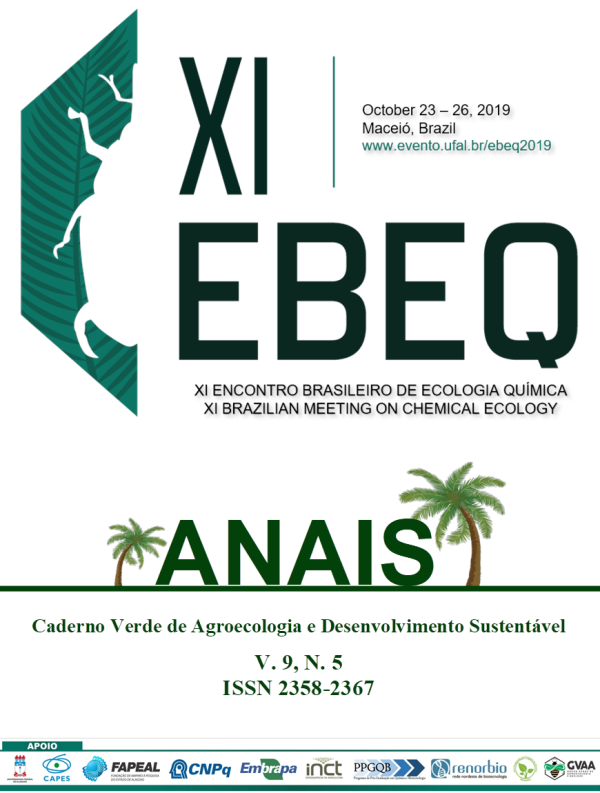NATAL ORIGIN, HOST PLANT USE, MATING AND DEATH: REFLECTIONS OF “YOU ARE WHAT YOU EAT” IN MIGRANT LEPIDOPTERA
Resumo
Many traditional techniques, such as mark-recapture or telemetry, are not particularly effective tools for studying the migration of insects. In the first part of my presentation I will discuss our ongoing research looking at the used of stable isotopes to study different aspects of migration of two noctuid pest species, the western bean cutworm, Striacosta albicost, and the true armyworm, Mythimna (Pseudaletia) unipuncta. We are using isotopes of H, C, N to address questions relating to natal origin, origin of mates, larval host plants and habitat type, as well as the relative contribution of larval and adult food sources on lipid resources. Many insects effectively sequester secondary plant compounds for their own defence. However, little attention has been given to the impact these compounds might have on when chemicals or their metabolites are released when the insects die and are decomposed. The overwintering colonies in Mexico, when many adults containing cardenoloids and alkaloids monarchs die and decompose, offer an excellent opportunity to determine if there are any affects on the local soil community. I will present our preliminary result of our project, showing that both total biomass of microarthropods and species diversity of oribatid mites are significantly different. I will also discuss the objectives of experiments we are setting up to determine if these, and other potential changes as a result of compounds released following butterfly decomposition, provide chemical cues that migrating monarchs might use to locate the overwintering sites.Downloads
Publicado
Como Citar
Edição
Seção
Licença
Termo de cessão de direitos autorias
Esta é uma revista de acesso livre, em que, utiliza o termo de cessão seguindo a lei nº 9.610/1998, que altera, atualiza e consolida a legislação sobre direitos autorais no Brasil.
O(s) autor(es) doravante designado(s) CEDENTE, por meio desta, publica a OBRA no Caderno Verde de Agroecologia e Desenvolvimento Sustentável, representada pelo Grupo Verde de Agroecologia e Abelhas (GVAA), estabelecida na Rua Vicente Alves da Silva, 101, Bairro Petrópolis, Cidade de Pombal, Paraíba, Brasil. Caixa Postal 54 CEP 58840-000 doravante designada CESSIONÁRIA, nas condições descritas a seguir:
O CEDENTE declara que é (são) autor(es) e titular(es) da propriedade dos direitos autorais da OBRA submetida.
O CEDENTE declara que a OBRA não infringe direitos autorais e/ou outros direitos de propriedade de terceiros, que a divulgação de imagens (caso as mesmas existam) foi autorizada e que assume integral responsabilidade moral e/ou patrimonial, pelo seu conteúdo, perante terceiros.
O CEDENTE mantêm os direitos autorais e concedem à revista o direito de divulgação da OBRA, com o trabalho simultaneamente licenciado sob a Licença Creative Commons do tipo atribuição CC-BY.
O CEDENTE têm autorização para distribuição não-exclusiva da versão do trabalho publicada nesta revista.
O CEDENTE têm permissão e são estimulados a publicar e distribuir seu trabalho online (ex.: em repositórios institucionais ou na sua página pessoal) a qualquer ponto antes ou durante o processo editorial, já que isso pode gerar alterações produtivas, bem como aumentar o impacto e a citação do trabalho publicado.










